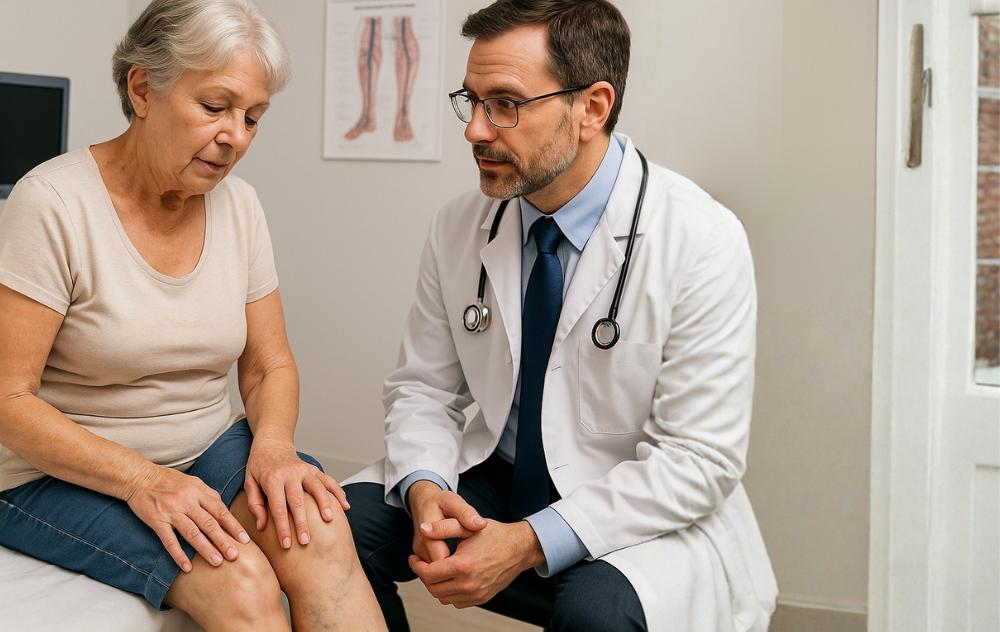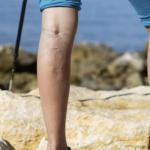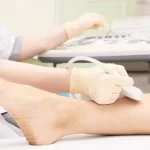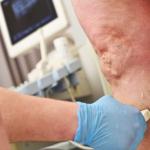
If you’ve undergone a vein procedure, it’s natural to wonder: can varicose veins come back after treatment? The honest answer is yes and no.
While modern, minimally invasive procedures can effectively close or remove diseased veins, varicose veins can sometimes reappear — but not for the reasons you might think. Let’s explore why recurrence happens, what truly happens to veins after treatment, and how you can lower your risk for the future.
What Happens to Veins After Treatment
During procedures like Endovenous Laser Therapy (EVLT), sclerotherapy, or Varithena®, the diseased veins are sealed or collapsed so that blood can reroute through healthy veins. Once a treated vein is successfully closed, it doesn’t reopen or “grow back.” Instead, your body naturally absorbs it over time.
However, this doesn’t mean new varicose veins can’t develop. Chronic venous insufficiency (CVI) — the underlying cause of varicose veins — is a progressive condition. If your vein valves are genetically or structurally weak, other veins in your legs may eventually become affected.
In some cases, the trauma of the initial vein damage or changes in circulation patterns after treatment can cause nearby veins to carry more pressure, leading them to dilate and become varicose over time.
Why the Answer Is “Yes and No”
Yes, varicose veins can come back — but not the same veins that were treated.
Once a vein is properly sealed with a modern technique, it’s unlikely to return. However, new varicose veins may form in untreated or healthy veins due to ongoing venous insufficiency, lifestyle factors, or aging.
No, they don’t come back — if the treatment was complete and the underlying issue is managed.
A thorough ultrasound evaluation and a complete treatment plan addressing all diseased veins can help minimize recurrence. Following post-treatment recommendations and routine checkups also plays a major role in preventing new vein issues.
Why Varicose Veins Sometimes Reappear
Varicose veins are caused by chronic venous insufficiency (CVI) — a condition where vein valves weaken and allow blood to pool in the legs. While vein treatments like Endovenous Laser Therapy (EVLT), sclerotherapy, and Varithena® close off or remove the damaged veins, they don’t prevent new veins from developing problems later.
Common reasons for recurrence include:
-
Progressive vein disease: CVI is a chronic condition that can affect new veins over time.
-
Genetics: A family history of vein disease increases your likelihood of developing new varicose veins.
-
Lifestyle factors: Prolonged sitting or standing, obesity, and pregnancy can all put pressure on leg veins.
-
Incomplete treatment: If all affected veins weren’t treated initially, residual vein issues can lead to new visible veins.
The Difference Between Recurrent and Residual Veins
After vein treatment, some patients notice new bulging veins near the same area. However, this doesn’t necessarily mean the treated veins reopened. Instead:
-
Residual veins are veins that were already weakened but not treated during the initial procedure.
-
Recurrent veins are brand-new veins that develop after treatment due to ongoing vein disease or lifestyle factors.
Understanding this difference is key to setting realistic expectations and maintaining results long term.
What Causes Veins to Recur After Trauma
When veins are damaged or treated, the body’s circulation adjusts. This shift can create localized pressure on nearby healthy veins, sometimes accelerating wear on those vein walls and valves. In essence, vein trauma and inflammation can make the surrounding venous system work harder, leading to potential weakening or dilation in new areas.
Additionally, if lifestyle or medical factors (like standing for long hours, obesity, or pregnancy) persist after treatment, the extra strain may cause other veins to become varicose even if the original treated ones stay closed.
How to Prevent Varicose Veins from Coming Back
The good news? There are effective ways to help prevent recurrence.
-
Stay active: Walking or light exercise promotes healthy circulation.
-
Elevate your legs: This helps blood flow back toward your heart.
-
Wear compression stockings: These reduce pressure and swelling in your legs.
-
Maintain a healthy weight: Less weight means less strain on your veins.
-
Follow up with your vein specialist: Routine ultrasound checks can detect early vein changes before symptoms appear.
Why Choosing the Right Vein Clinic Matters
Choosing an experienced vein specialist is important for long-term results. At USA Vein Clinics, all treatments are performed by physicians specializing in minimally invasive vein care. Our experts use ultrasound imaging to ensure every affected vein is treated precisely and completely, lowering the chance of recurrence.
Regain Confidence in Your Legs
If varicose veins have returned or you’re noticing new symptoms like leg swelling, heaviness, or visible veins, don’t wait. Modern, non-surgical treatments can help you restore comfort and confidence in your legs — often in less than an hour.
Schedule a consultation today at your nearest USA Vein Clinics location and take the next step toward lasting relief.





